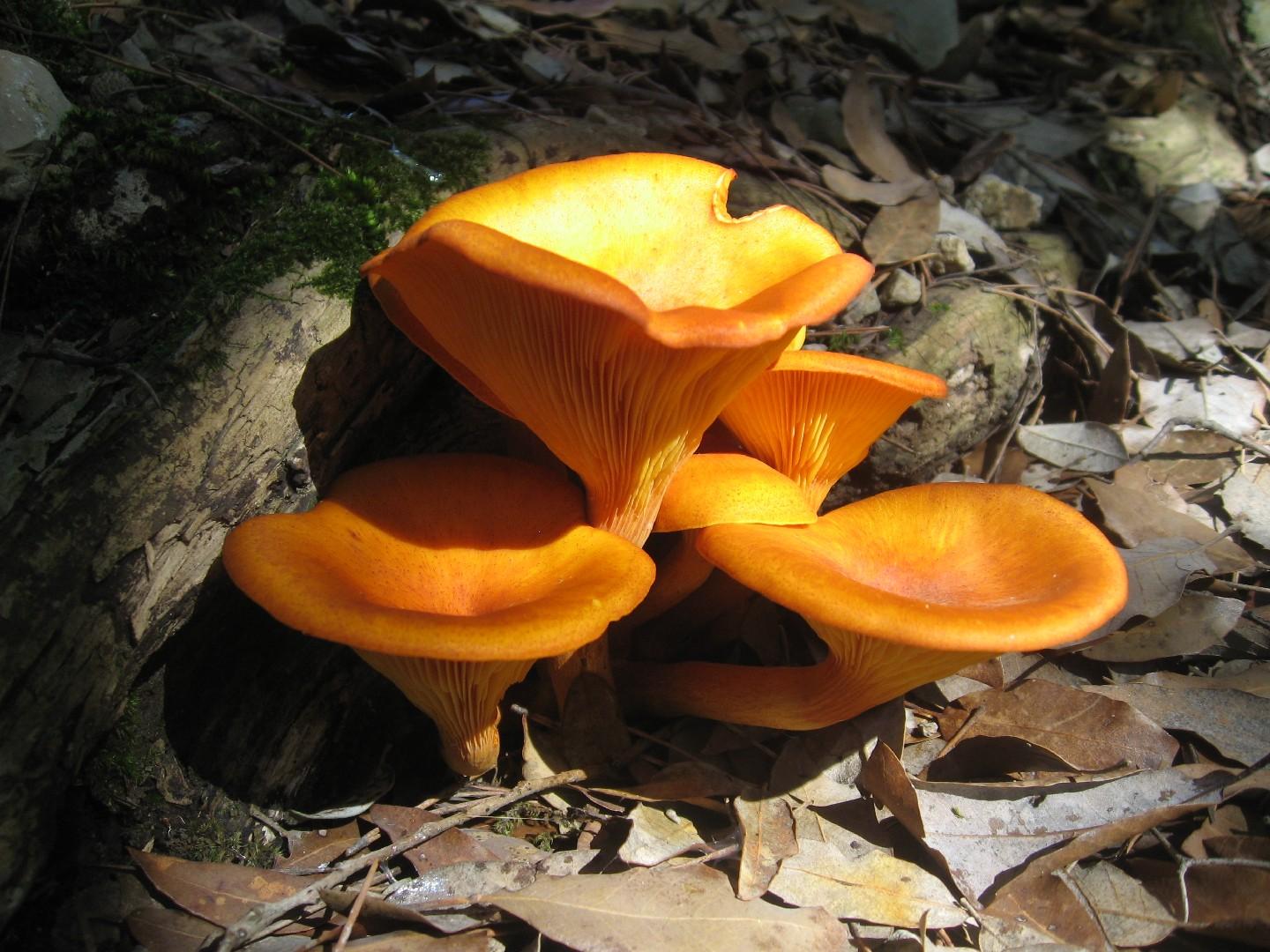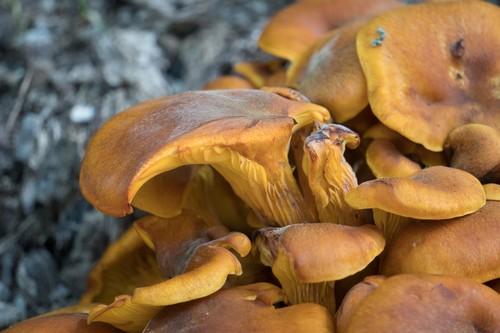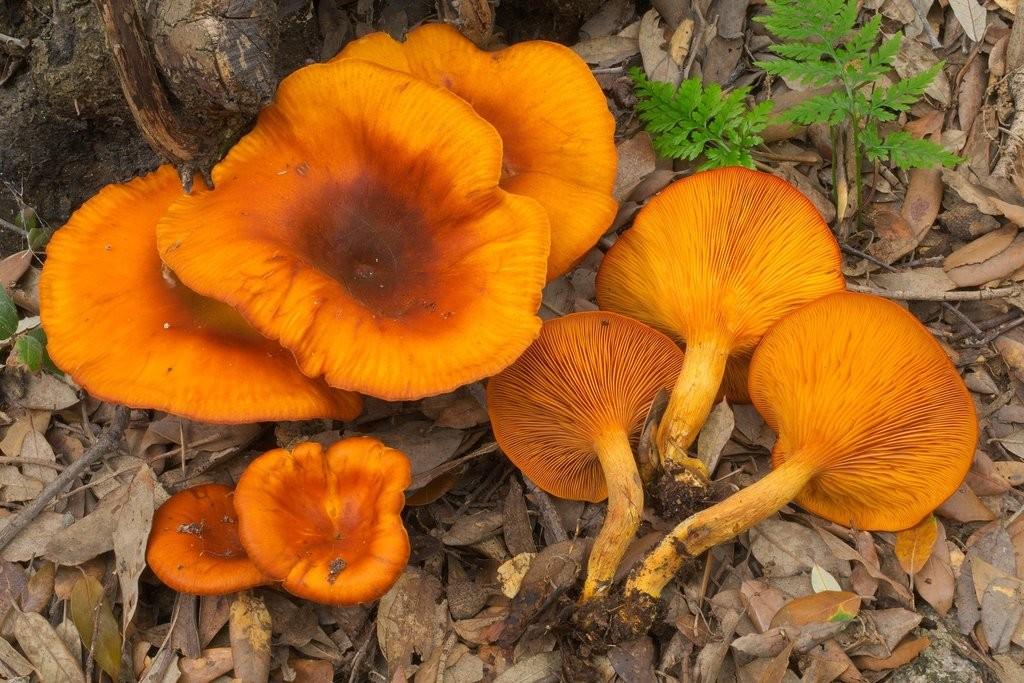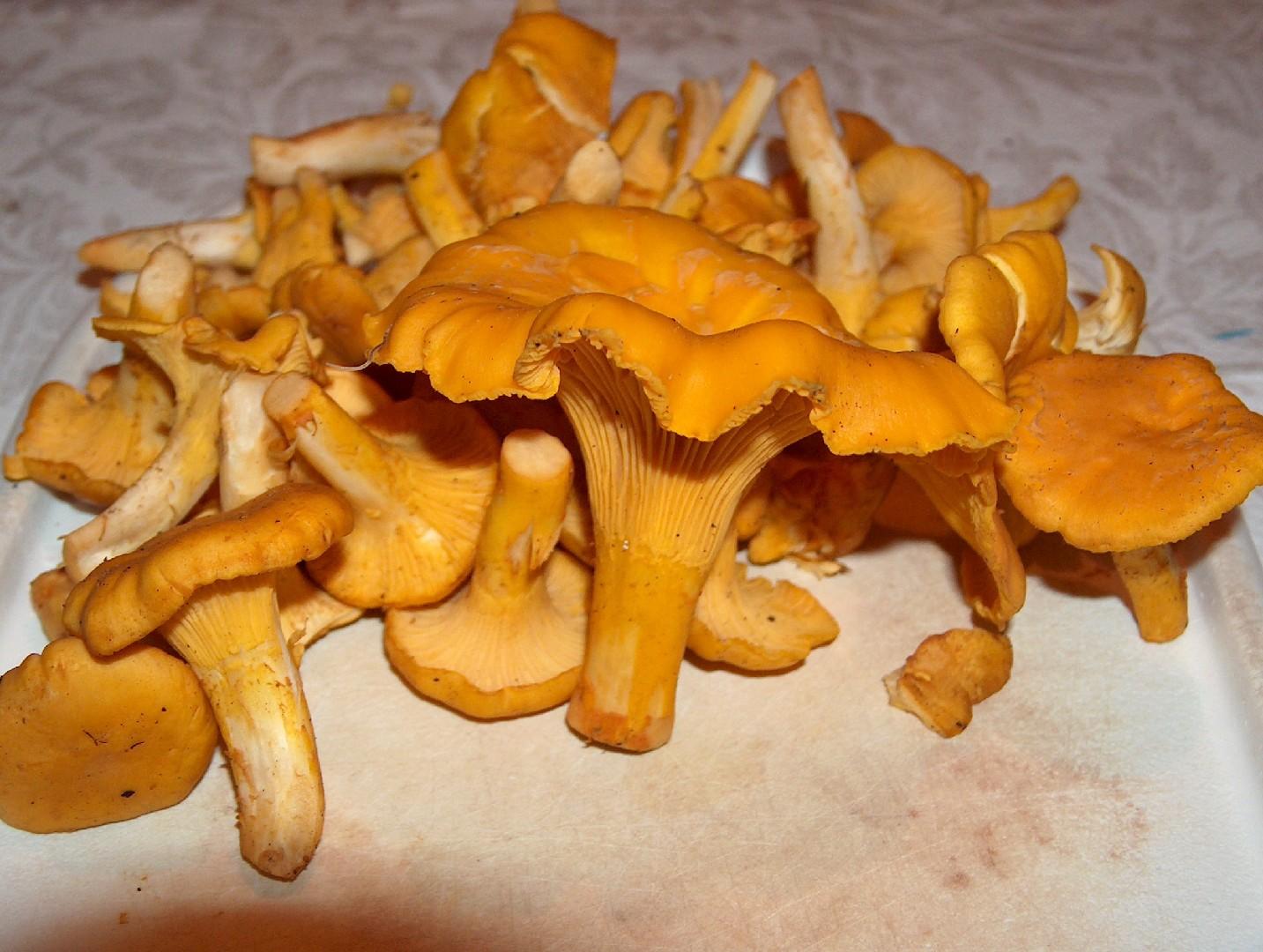



Jack-o'-lantern
Omphalotus olearius
A species of Omphalotus.
The Omphalotus olearius, commonly known as the jack-o'-lantern mushroom, truly embodies its namesake beyond mere appearance. Its large, spherical caps boast an intense orange hue, strikingly reminiscent of pumpkins. What's more, these fungi possess a captivating nocturnal secret: they emit their own light. As darkness falls, their bioluminescent gills become visible, casting an eerie green glow. Adding to this spectral aura, the jack-o'-lantern mushroom is also highly toxic, further aligning with its ominous theme.
Attributes of Jack-o'-lantern
Scientific Classification of Jack-o'-lantern
Toxicity and Edibility of Jack-o'-lantern
Is Jack-o'-lantern Toxic?
The 'jack-o'-lantern' often thrives in decomposing timber or wooded environments, particularly in warmer periods. Given its neurotoxic nature, it can induce serious physical reactions including impaired awareness, excessive sweating, gastrointestinal issues, and even immobility. Its distinctive orange luminescence can aid in its identification, differentiating it from harmless counterparts. Due to its potential health risks, any contact with the 'jack-o'-lantern' necessitates careful oversight.
Is Jack-o'-lantern Toxic to Dogs?
Jack-o'-lantern can be dangerous to dogs. If your pet has consumed this mushroom, seek immediate veterinary attention. Symptoms may vary, but early intervention is crucial for the best outcome.
